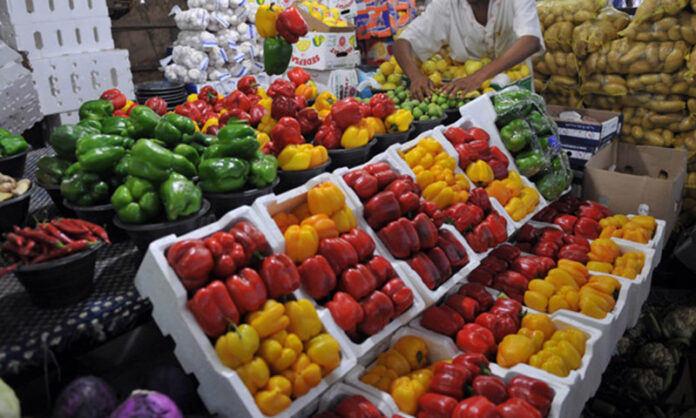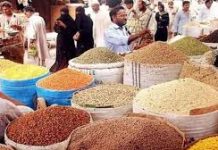Agriculture Desk
Global agri-food trade has more than doubled since 1995, amounting to $1.5 trillion in 2018, with emerging and developing countries’ exports on the rise and accounting for over one-third of the world’s total, according to a new report issued by the Food and Agriculture Organization of the United Nations (FAO).
The State of Agricultural Commodity Markets, 2020 (SOCO 2020) argues that global trade and well-functioning markets lie at the heart of the development process as they can spur inclusive economic growth and sustainable development, and strengthen resilience to shocks.
“We need to rely on markets as an integral part of the global food system. This is all the more important in the face of major disruptions, whether they come from COVID-19, locust outbreaks or climate change,” wrote FAO Director-General QU Dongyu in his introduction to the report.
The report estimates that about one-third of global agricultural and food exports are traded within a global value chain and cross borders at least twice.
The rise of global value chains is driven by income growth, lower trade barriers and technological advancements, which have transformed markets and trade processes, linking farmers to traders and consumers across regions and countries.
“Global value chains can make it easier for developing countries to integrate into global markets. As they link our food markets closely, they also provide a mechanism to diffuse best practices to promote sustainable development,” said the FAO Director-General.
In turn, by participating in global value chains, smallholder farmers can boost their food production and income. On average and in the short term, a 10 percent increase in agriculture’s global value chain participation can result in an increase of around 1.2 percent in labour productivity, finds the report.
Smallholder farmers, however, are often missing out on the benefits of global value chains. Furthermore, the emergence of global value chains with the stringent food quality and safety requirements could further marginalize smallholders.
“We need to redouble efforts to include smallholder farmers in modern food value chains, thus securing rural incomes and food security in both rural and urban areas,” said Qu.
To achieve this, there is a need for broad policies to create an environment that enables markets to flourish and bolsters smallholders’ participation in global value chains – for example, better rural infrastructure and services, education and productive technology.
Digital technologies can help markets to function better and can improve farmers’ access to them. Innovations, such as food e-commerce, can benefit both farmers and consumers. However, to guarantee that the dividends of digital innovation are shared with the poorest, the current digital divide in agriculture needs to be reduced.
The adoption of more inclusive business models, such as contract farming and blockchains, can also help farmers to better integrate into modern and more complex value chains.
For example, participation in contract farming can increase farm income by more than half – based on an analysis of main studies on contract farming. The report underlines, however, the overall lack of information on the different impacts of contract farming, apart from its impact on farmers’ welfare.
The report makes the case for the role agri-food markets can play in fostering sustainable development.
It argues that the promotion and wider application of voluntary sustainability certification schemes and standards in agriculture, for example, can address trade‑offs between economic, environmental and social objectives.
Sustainability certification schemes can promote fair trade, inclusion, non‑discrimination, and environmentally-friendly farm practices. They also can ensure occupational safety, ban child labour, and encourage investments.
For instance, according to data from smallholder coffee farmers in Uganda, sustainability-certified families spend 146 percent more on child education and keep children at school longer than non‑certified families.
Another study on certification schemes that promote sustainable forests show that the production of forest shade-grown coffee in Ethiopia can help alleviate forest degradation.
The report also points out that whilst bananas are one of the most traded tropical commodities in the world, only an estimated 5-8 percent are covered under sustainability standards.
International agri-food trade has been driven by: technological progress; urbanization; population and income growths; lower transport costs; trade policies and a decline in average import tariffs.
Upper and lower middle‐income countries together have increased their share in global agri‐food exports from about 25 percent in 2001 to 36 percent in 2018.
Whilst global agri-food trade has doubled since 1995 in real value, its growth rate has been slower since the 2008 financial crisis. This is expected to be further impacted by the COVID-19 pandemic.
The 2008 financial crisis and consequent economic slowdown stalled the evolution of agri-food global value chains, and the COVID-19 pandemic could further disrupt their potential in global trade and growth.
Digital technologies are transforming all stages of the food value chain – from farm to table. They improve efficiency, create jobs and save resources. But it is difficult to foresee all the impacts technological innovation can have on how we grow, process, trade and consume food.
While countries in Europe and Central Asia, and East Asia and the Pacific tend to trade within the same regions, countries in South Asia, Latin America and the Caribbean, sub‑Saharan Africa, North America, and the Middle East and North Africa trade more globally. About 90percent of exports in agricultural commodities from sub-Saharan Africa, and Latin America and the Caribbean are destined for other regions.
Trade will continue to play an important role in global food security and nutrition, by moving food from surplus to deficit regions.
Regional trade agreements can stimulate global value chain participation and spur institutional and policy reform. However, as many vulnerable countries continue to rely on global markets, the promotion of the multilateral trading system is important.
The larger part of agri‑food trade is made up of processed food products.
The report covers four areas: trends in agricultural and food markets; global value chains in food and agriculture; farmers and value chains – business models more sustainable growth; digital technologies and agricultural and food markets.















